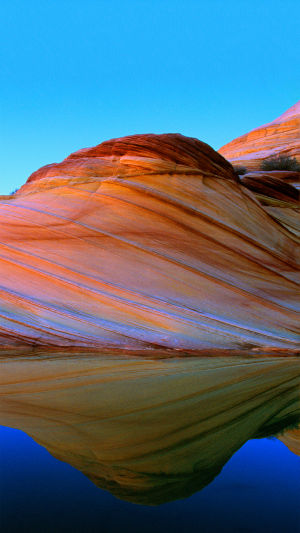Sandstone landforms stand as remarkable testaments to the intricate relationship between geology and the forces of nature. Carved over eons by wind, water, and geological processes, these formations showcase the artistic prowess of the Earth itself.
From towering mesas to delicate arches, the world of sandstone landforms offers a mesmerizing array of shapes and textures that captivate both the eye and the imagination.
Sandstone, a sedimentary rock composed of sand-sized grains, forms the basis of these stunning geological wonders. Layers of sandstone are often deposited by ancient rivers, lakes, or oceans. Over millions of years, pressure and the cementing of grains create solid rock formations that become susceptible to erosion and sculpting by natural elements.
Among the most famous sandstone landforms are natural arches, intricately carved by the relentless forces of weathering. These arches span over canyons and gorges, creating breathtaking windows to the sky. The iconic Delicate Arch in Arches National Park, USA, is a prime example of nature's architectural prowess, drawing countless visitors to witness its delicate splendor.
Rising like sentinels from the landscape, mesas and buttes are towering sandstone formations that command attention. Mesas are characterized by flat tabletop surfaces, while buttes are more slender and isolated formations. The Grand Mesa in Colorado and Monument Valley's colossal formations are awe-inspiring examples of these sandstone wonders.
The interplay of erosion and sandstone gives birth to remarkable slot canyons, where narrow passageways wind through towering rock walls. Antelope Canyon in Arizona, USA, is a visual symphony of light and shadow, with intricate patterns formed by water's artistic carving of the sandstone.
The coloring of sandstone landforms ranges from earthy reds and oranges to soft pinks and yellows, creating a vivid palette that shifts hues with the changing light. The color variation is often due to the presence of iron oxide or other minerals within the sandstone.
Sandstone landforms hold cultural significance for indigenous peoples and various societies. They often serve as sacred sites, artistic canvases for ancient petroglyphs, and symbols of cultural heritage. The connection between these formations and human history adds a layer of depth and reverence to their splendor.
The process of erosion, driven by wind and water, shapes sandstone landforms with intricate precision. Windblown sand carves delicate arches and curves, while water sculpts smooth surfaces and meandering canyons. These geological processes create a harmony of form and function that astounds observers.
Sandstone landforms draw tourists from around the globe, fostering appreciation for Earth's geological marvels. Parks and protected areas like Petra in Jordan, Uluru in Australia, and the American Southwest provide opportunities for exploration while emphasizing the importance of conservation to preserve these delicate formations.
Artists and photographers are drawn to the captivating beauty of sandstone landforms. The ever-changing interplay of light and shadow creates a dynamic canvas for artistic expression. Capturing the unique textures and colors of these formations becomes a way to immortalize their transient beauty.
Sandstone landforms bear witness to the passage of time, embodying the deep history of the Earth's evolution. They stand as silent witnesses to the eons that have shaped our planet, inviting contemplation on the vastness of geologic time and the impermanence of all things.
In the world of sandstone landforms, nature's artistry takes center stage, shaping breathtaking structures that stand as both geological wonders and artistic masterpieces.
These formations, sculpted by the hands of time and the elements, remind us of the Earth's enduring beauty and the intricate dance between geological processes and natural forces. From delicate arches to majestic mesas, sandstone landforms captivate our senses, enrich our understanding of the world's history, and inspire awe and wonder at the immense creativity of the natural world.





